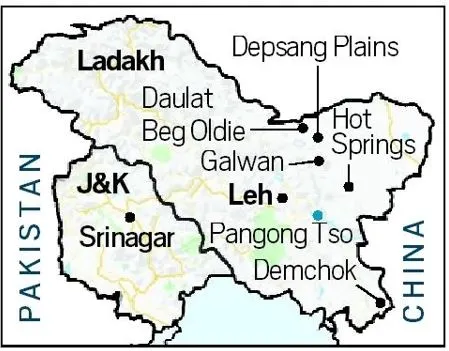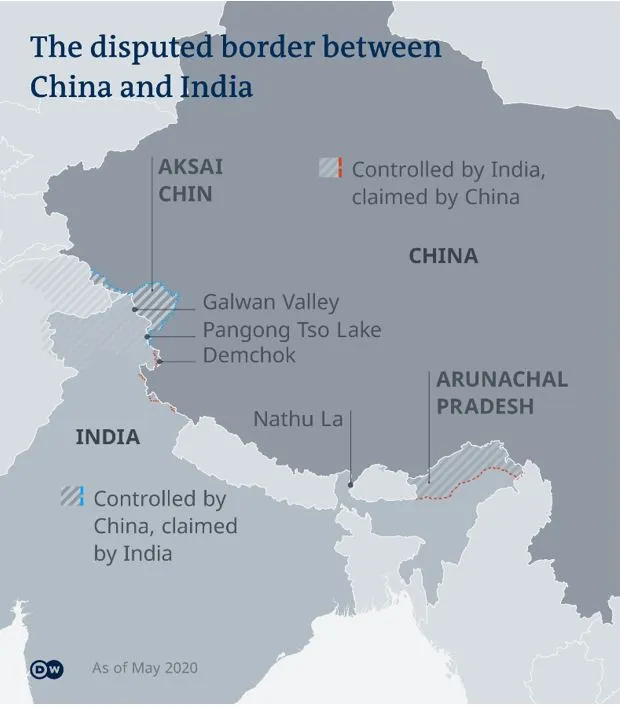

22nd October 2024 (12 Topics)
Context
India and China have reached a significant agreement to restore patrolling rights to each in the Depsang Plains and Demchok region, these are areas where the problems are called legacy issues, predating the 2020 Chinese incursions.
Background (The Galwan Clash Backdrop)
- In a major escalation along the Line of Control, Indian and Chinese troops clashed in the Galwan Valley on June 15, 2020.
- This incident was the first deadly confrontation in the region since 1975 and resulted in casualties on both sides.
- The root cause is an ill-defined, 3,440km (2,100-mile)-long disputed border. Rivers, lakes and snowcaps along the frontier mean the line often shifts, bringing soldiers face to face at many points, sparking a confrontation.
- Border infrastructure developments and differing perceptions of the LAC had triggered the clash.
- Following the clash, both sides engaged in de-escalation talks amid heightened tensions in bilateral ties.
- The PLA's 2020 incursions had severely restricted Indian Army patrols at key points in the Depsang Bulge and CNN Junction.
- However, the establishment of buffer zones in areas like Galwan, Khugrang, Gogra-Hot Springs, and Pangong Tso helped reduce tensions.
Key Points of the Deal
- The two sides have agreed that patrolling in the following two areas will be carried out up to the old patrolling points along the LAC.
- Depsang Plains in the north of Ladakh
- Demchok in the south of Ladakh
- This means that Indian troops can patrol up to patrolling point (PP) 10 to 13 in the Depsang Plains, and in Charding Nullah of Demchok.
- Ongoing Disengagement Process: The deal is part of a larger disengagement process that has seen successful pullbacks at several flashpoints, including Pangong Tso, Gogra, and Hot Springs. The current focus on Depsang and Demchok represents a willingness to address the more challenging aspects of the border dispute.

The Other Friction Points
|
More Articles



